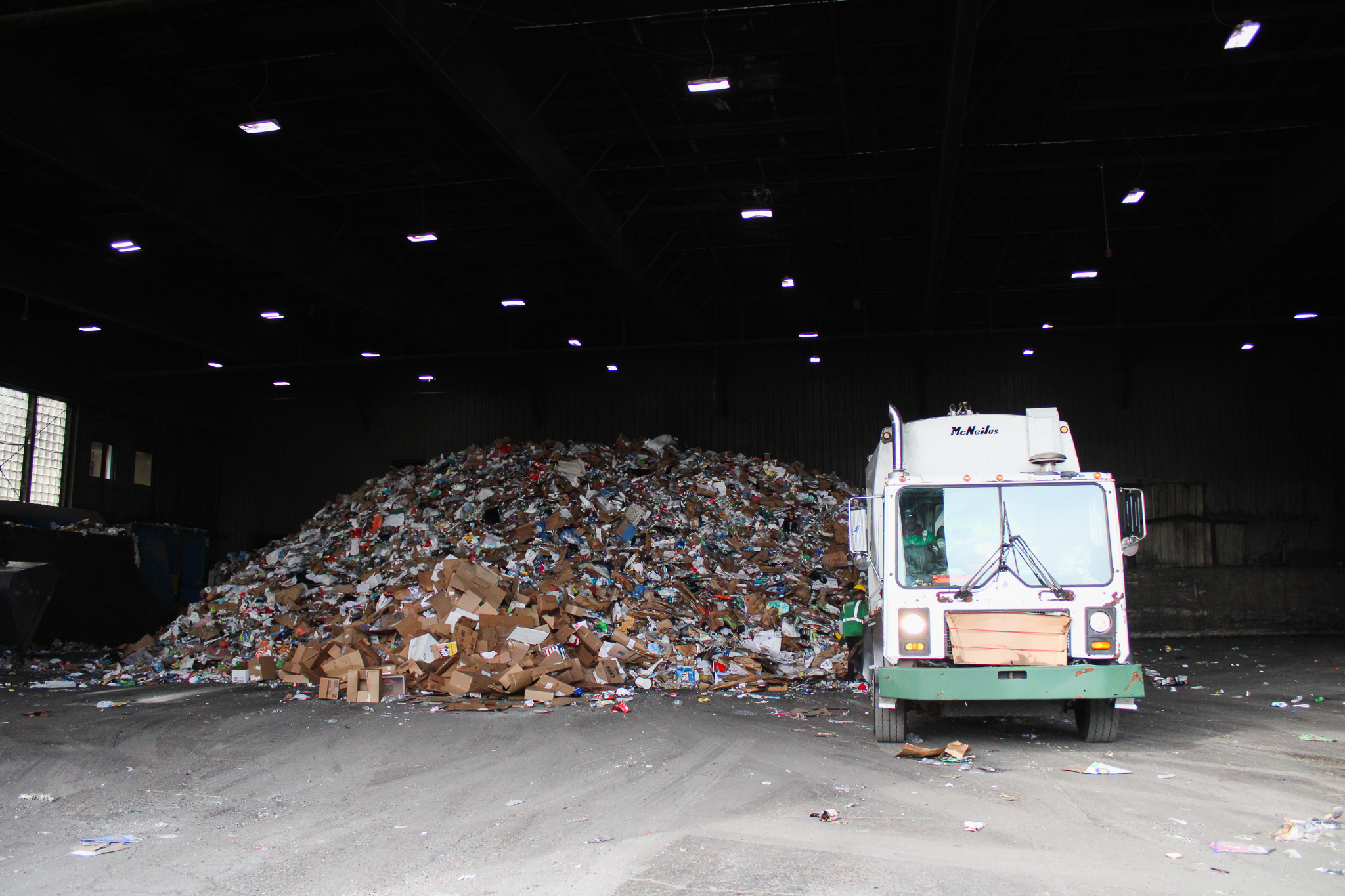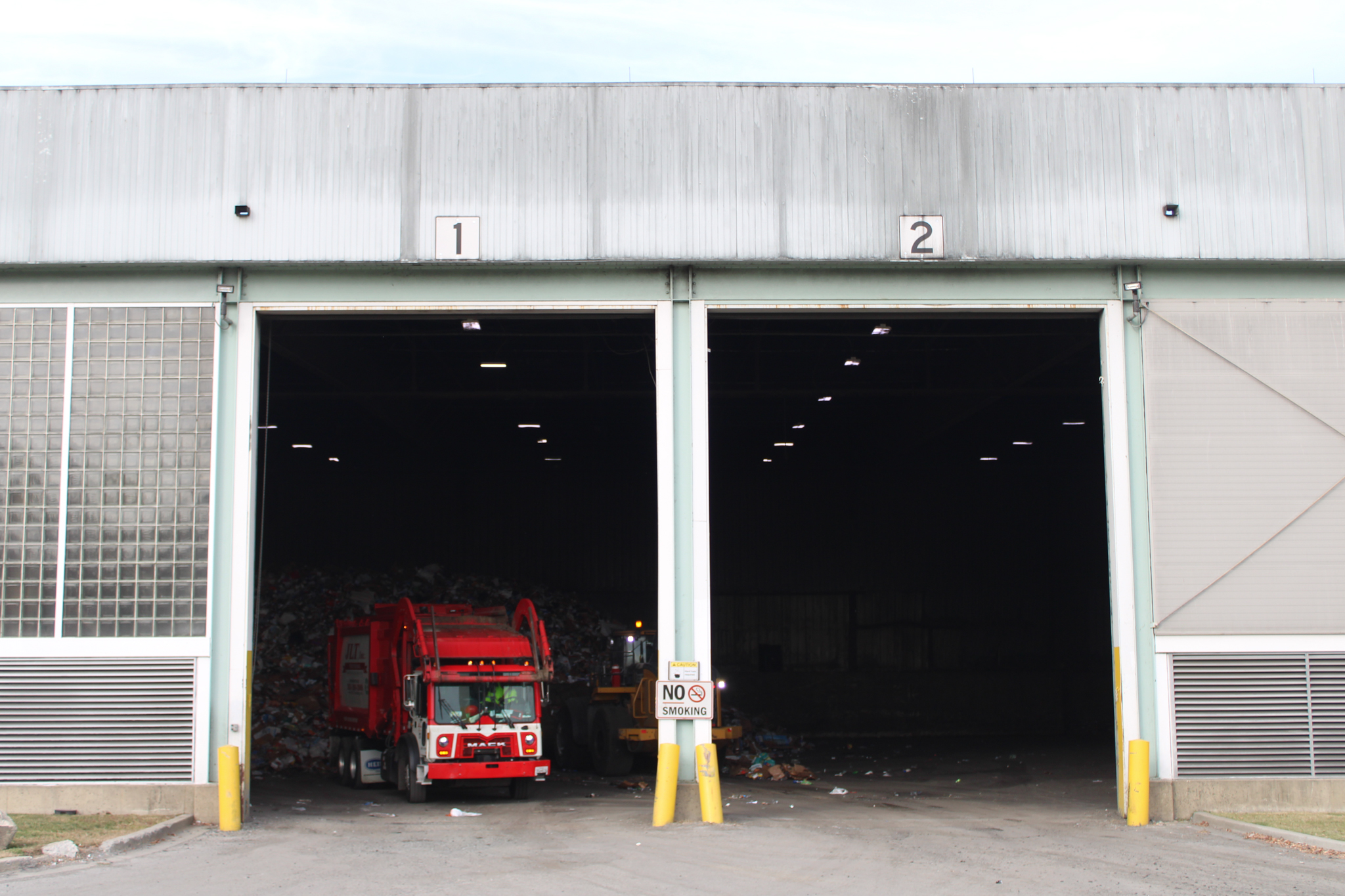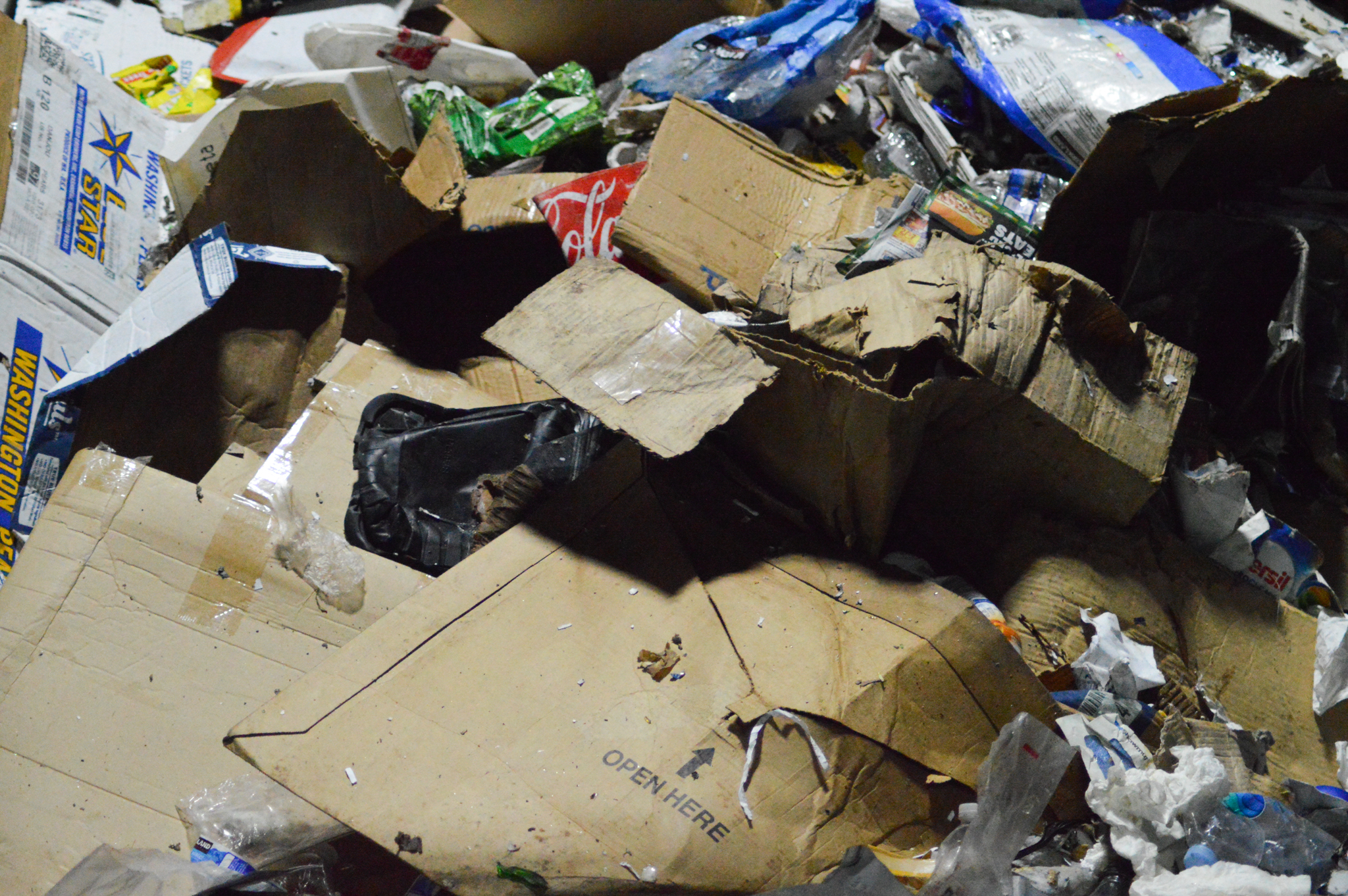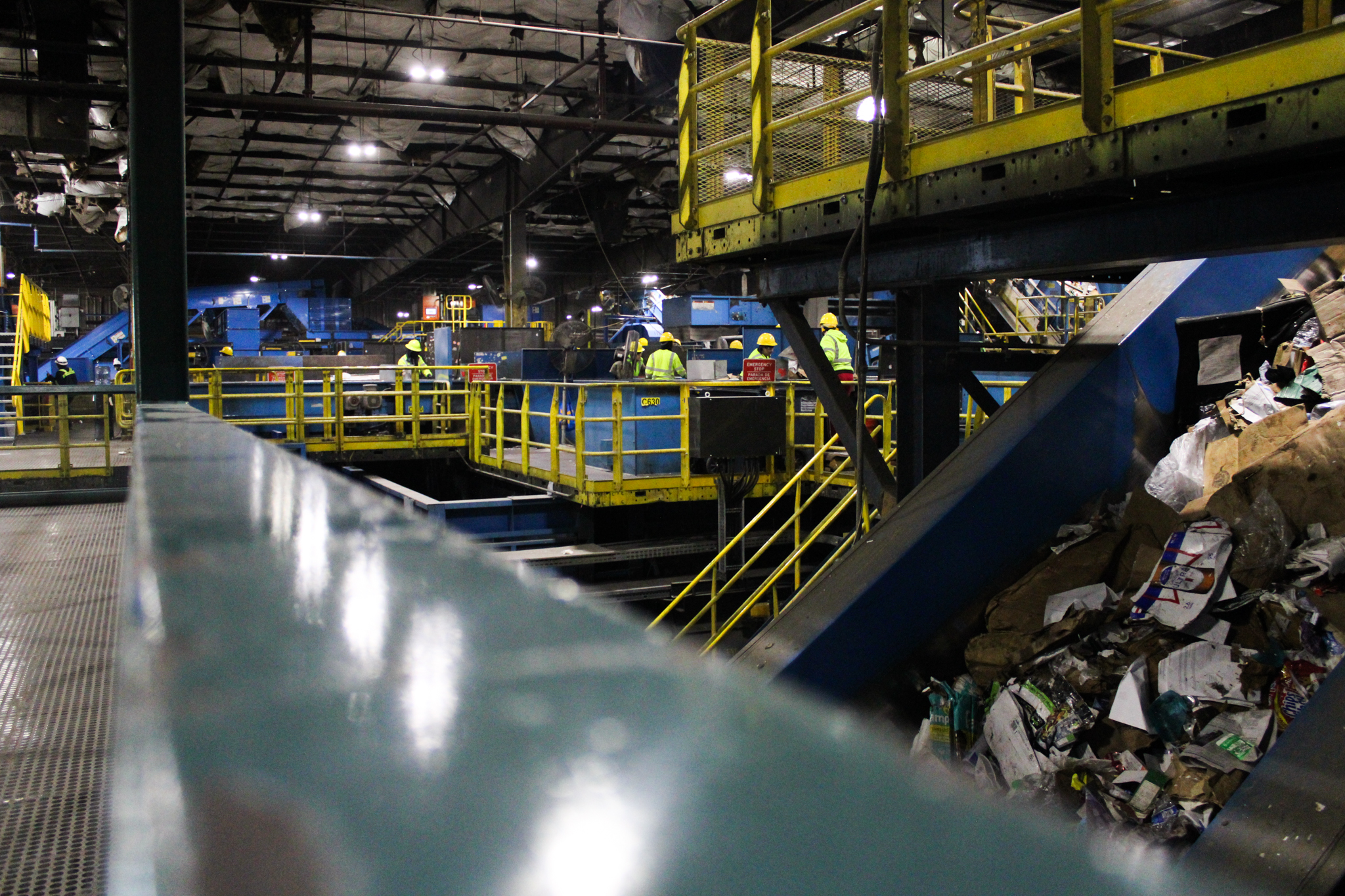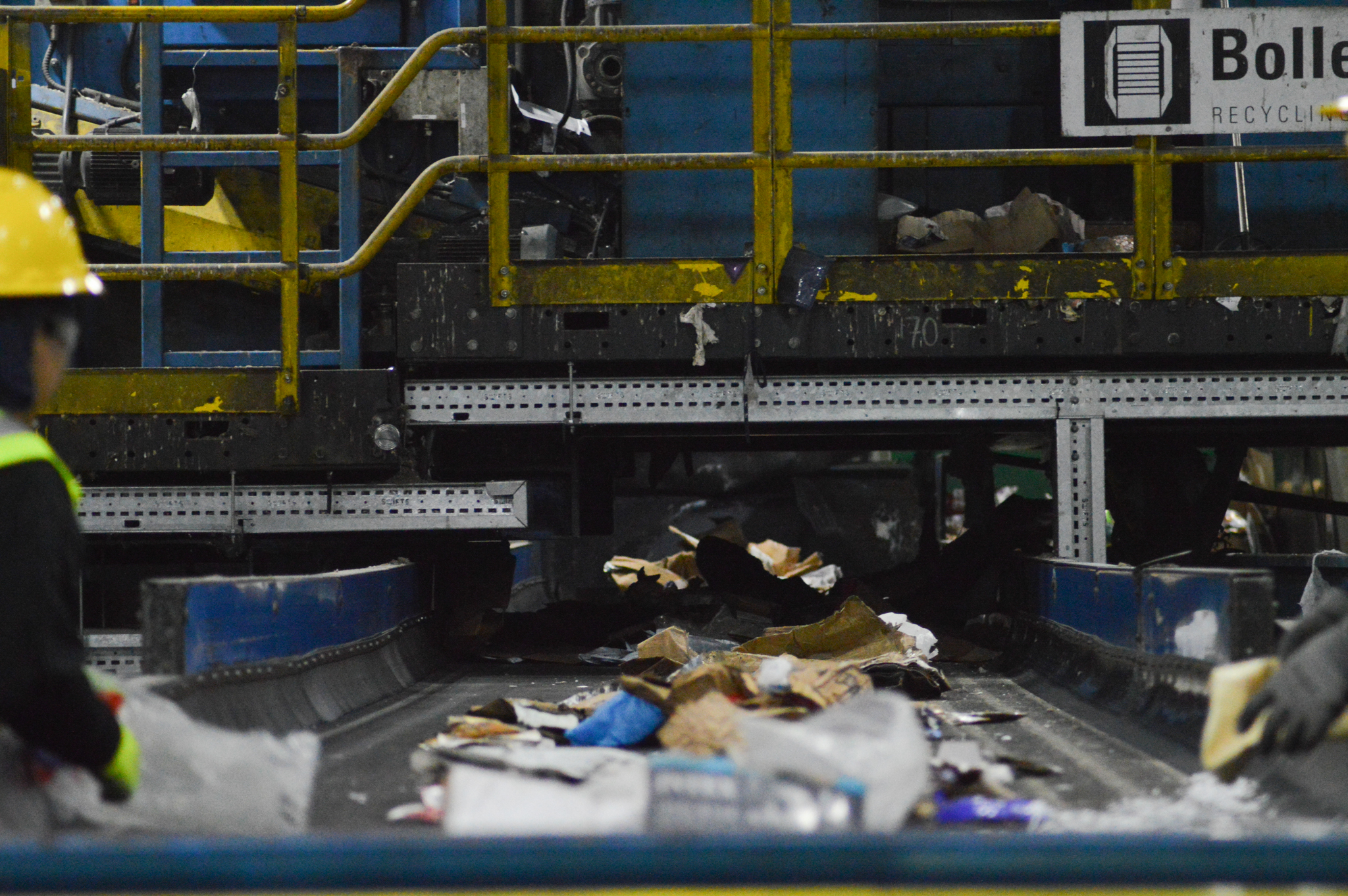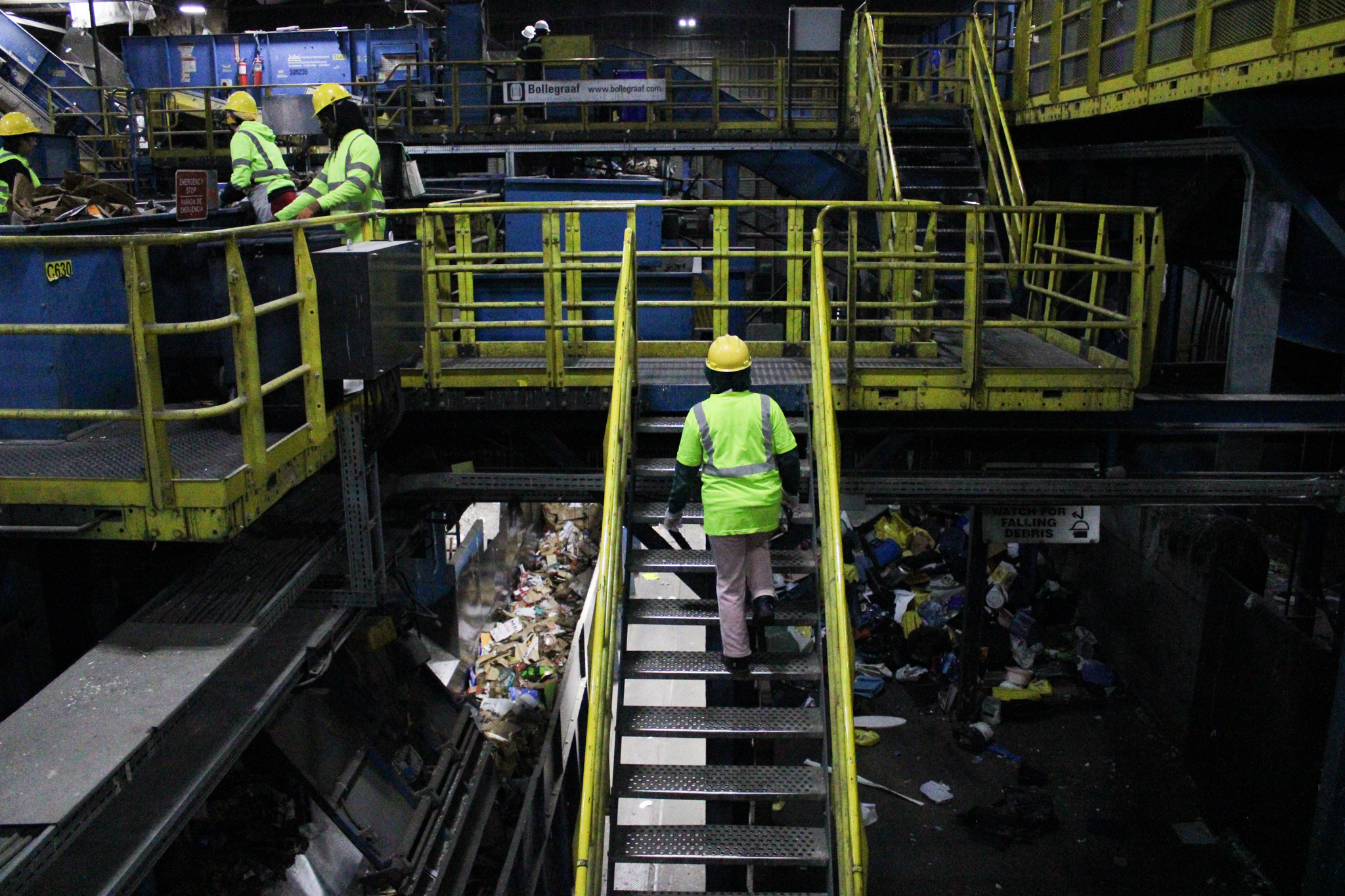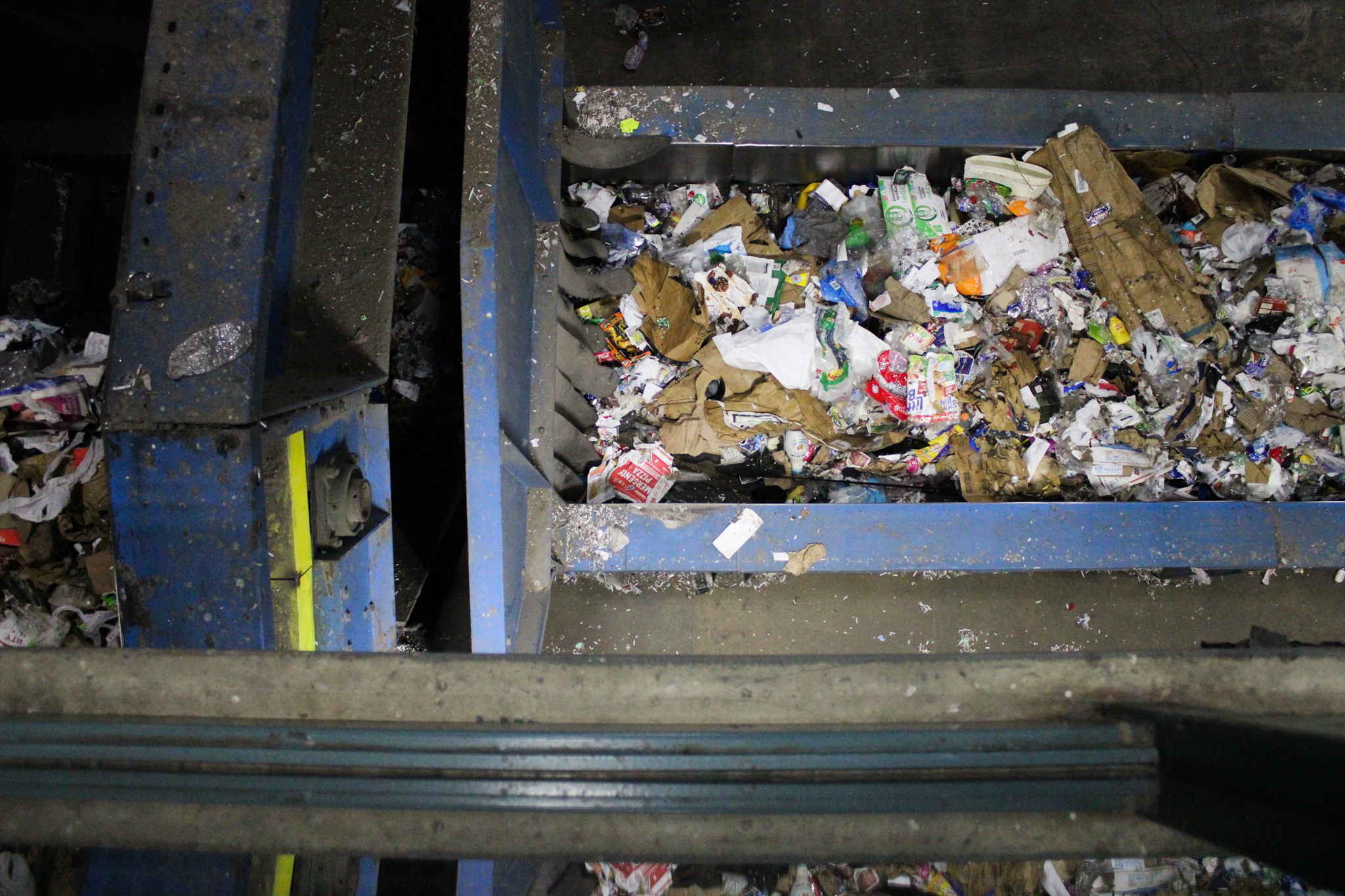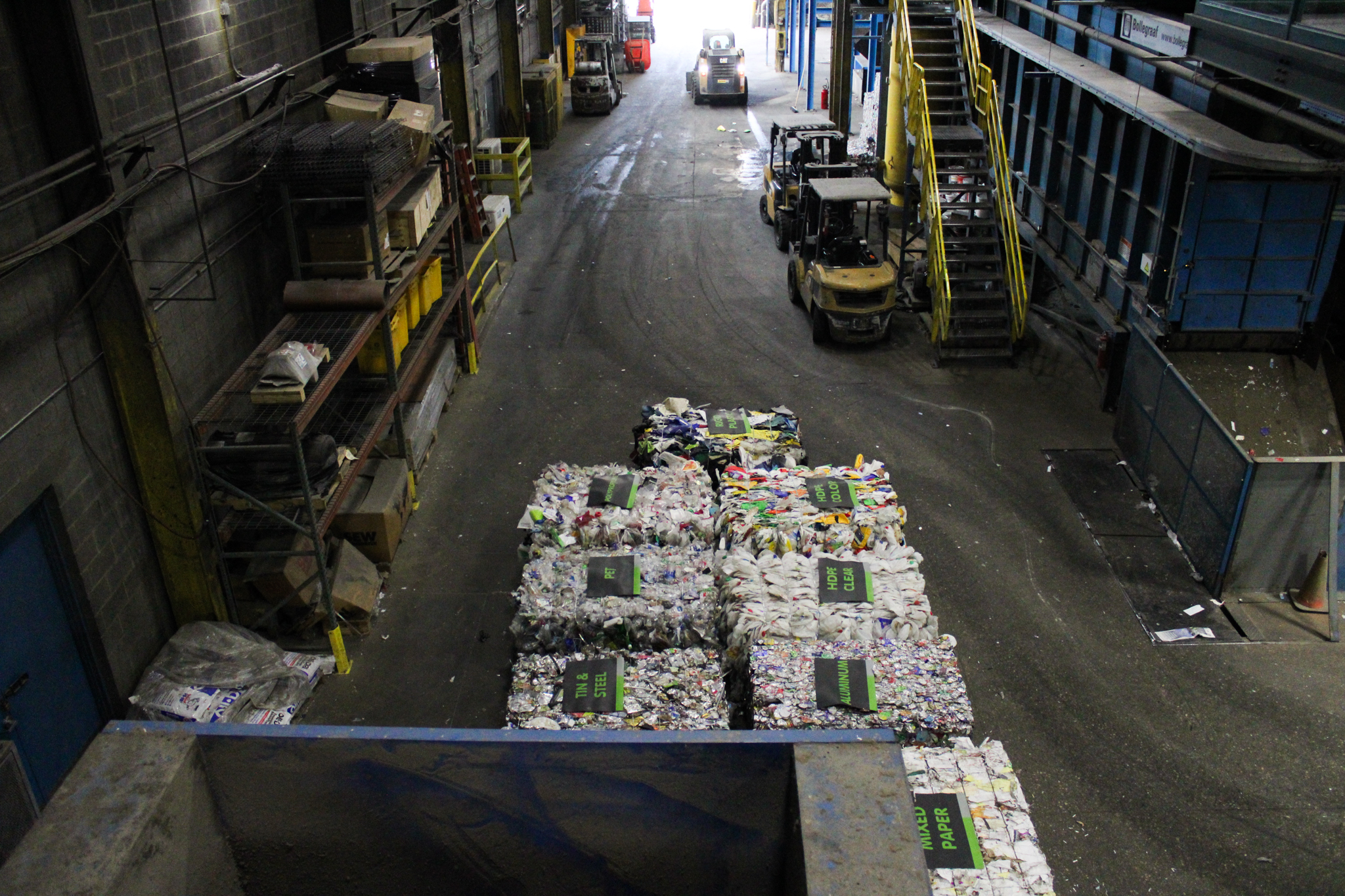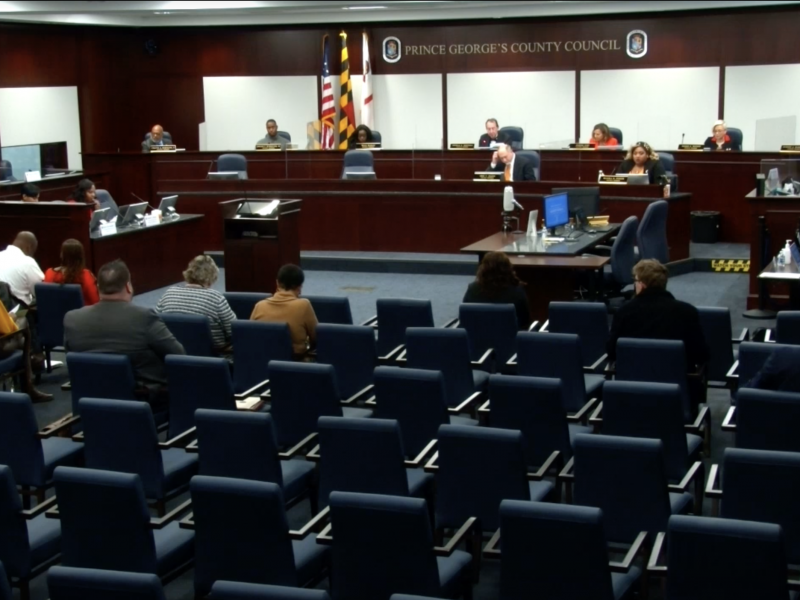Recycling is a regular part of life, but what happens to materials after they fall into blue cans can often seem like a mystery.
Here is a look at what happens inside a Prince George’s County recycling facility and what can be recycled in the county.
Recycling trucks collect materials from curbside bins and then drive to the Prince George’s County Materials Recycling Facility in Capitol Heights, one of multiple facilities in the county. This is where recyclable materials are sorted, packaged and marketed to customers around the world.
On-campus recycled goods at the University of Maryland go through a private recycling facility, owned by Olive Street Processing LLC, in Capitol Heights, according to a spokesperson from this university’s sustainability office.
About 70,000 tons of recycled materials pass through the Prince George’s County facility every year, according to employees. Five days a week, employees sort through 250 to 300 tons of waste, according to Michael Bell, the facility’s acting senior operations manager.
The recycling facility has been maintained through a collaboration between the Maryland Environmental Service and the county since 2015.
[Prince George’s County to join national effort to boost semiconductor chip manufacturing]
Truck drivers first dump out recycled goods onto the “tipping floor” to be briefly inspected. The contents are then lifted into a drum feeder and fed into the facility.
Inside the facility is a complex system of layered conveyor belts, high-powered magnets, screens and workers in neon yellow hard hats sorting through recyclable and nonrecyclable materials.
Some employees said “wish recycling” — when people aren’t aware of the county’s recycling policies and simply throw anything into the blue bins — is a constant burden on their operations.
Plastic bags are a common “wish recycled” item, Bell said. The county does not recycle plastic bags and they often get tangled in the equipment which causes extra work for employees, Bell said.
Batteries, when put in normal recycling bins, can quickly become dangerous and cause fires at county facilities, Bell added..
“It creates heat and a spark and on that dry paper, you won’t know until you might be seeing smoke,” Bell said. “We try our best to educate the public as much as we can to not put batteries in the recycling, but we still get them a lot.”
Bell said he has seen pretty much everything end up on the conveyor belts —- including car parts, furniture and used diapers.
“Nothing surprises me,” he said.
In Prince George’s County, glass, aluminum, steel cans, paper and cardboard boxes can all be recycled. Other materials, such as plastic bags and styrofoam cannot be.
Plastics labeled 1, 2, 3, 5 and 7 can be recycled. These labels usually appear on recyclable plastic surrounded by three arrows to indicate their category.
This does not include plastic bags, which are labeled as 4, and plastic polystyrene or styrofoam, labeled as 6.
Machines do the first round of sorting in the Capitol Heights facility. People are used as the “last line of defense,” Bell said.
Flat and thicker items are separated by moving gears. A large magnet separates aluminum cans and an optical system separates different plastics.
After the sorting process, recyclables are pressed into rectangular blocks. These wire-wrapped bricks are sent to manufacturers, who reshape the material into new products.
Purchasers usually turn these recycled plastics into small chips and fibers. They can also melt them into new bottles and other products.
[Greenbelt receives highest sustainability award among 16 Maryland municipalities]
Angie Webb, the recycling coordinator at the Maryland Environmental Service, manages marketing for the county’s recycled goods. The revenue generated from marketing runs the recycling program, she said.
Because of Prince George’s County’s proximity to Baltimore and its port, Webb said, the county’s recycling facilities export much of its products overseas.
“We’re really lucky in where we are — that we are located on the east coast, and there are markets for every commodity,” Webb said.
While much of the recycled material from the county stays east of the Mississippi River, Webb said the bulk of the county’s paper shipments are sent overseas to India, Indonesia and South Korea.
One type of plastic — number 1 — typically stays in the North Carolina area to be made into carpet, new plastic bottles and clothing, according to Webb.
Bell, who has worked with the Maryland Environmental Service for 12 years, said he has seen a lot of people who don’t believe that their recycled goods are actually recycled.
“We get a lot of tours here because people are concerned about whether we are really recycling,” Bell said. “You’d be surprised at how many people actually really think that.”
